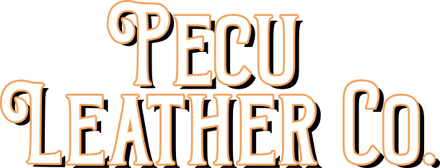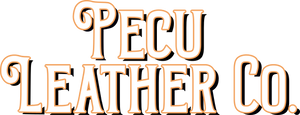Leather Guide
Let's talk about the different grades of leather and the steps taken for each one. I'll walk you through the splitting of the hide to make the full grain leather and other various forms of leather. To increase your knowledge further, I will take you through the leather tanning process. With some simple tips, I'll show you how to test if something is full grain or just "genuine leather."
Let's begin with the classification of leather.
The primary five grades of leather used in making leather goods are as follows:
Full-grain leather
Top-grain leather
Split grain leather
Genuine leather
Bonded leather
I'd like to explain the fundamentals of leather processing to help you understand how to make the right choice when buying your leather goods.
The leather derived is from the animals' hide. Even before the treatment or the tanning starts, the hide is split.
The splitting of the hide explains how various grades of leather relate to each other. When they cut the hide with a cutting blade, the top layer cut (top grain) will then be called the full grain or corrected grain depending on how it is processed. The bottom cut or the split, is then sliced into more layers that are used for lower-end leather goods and other apparel. A noticable point here is that the split bottom layer doesn't have the skin features since it isn't the outermost layer.
Rawhide, also known as cowhide, is 6mm to 10mm thick that renders it unusable for leather goods. So for leather products, they must split the hide taking into consideration the top cut.
The top cut is, therefore, the most valuable cut containing the full grain of the hide as compared to the bottom cut, which is left over to be sliced further.

So now that we know the process let's look at the features.
-
Full-Grain Leather
Full grain leather has peculiar properties of durability along with resistance to wear and tear. Goods made from this leather last for lifetimes, and in most cases, the stitching fails first.
Vegetable-tanned and distressed leather are the two most common forms of full grain leathers. You can buy full grain leather wallets and full grain leather belts, which can be used for many many years.
-
Top Grain Leather
So how will I know this? Answer: Compare it to full grain leather.
Honest sellers will tell you that original leather goods are made using full grain and top grain leather grades from the top cut of the hide.
Difference between Full Grain Leather & Top Grain Leather
Full grain leather undergoes the least post-processing at the tannery and the complete grain intact, which you can fill with the touch of your hand.
A top grain will typically have a pigmented leather surface and will be buffed and sanded from both sides.
Unlike the full grain leather, top grain leather will be devoid of scarring, blemishes, etc. that you can notice in the full grain leather surface. Top grain leather will rather be uniform and smooth to touch.
-
Leather Aging
A full grain leather product will form a patina. The leather continues to look good, resisting scratches, as the leather can heal itself of blemishes and scratches as it absorbs oils and develops a patina.
Top grain leather is like a new car's paint job. It looks its best on day one. Gradually over time, as it gets nicked and scratched, the top grain leather product loses its charm and looks slowly worse over time.
Top grain leather goods do not form patinas, nor does the leather heal itself. Typically top grain is used in designer handbags.
-
Water Test
Water on the full grain leather will be absorbed into the surface as the full grain leather is much more porous. Pores in the top grain leather get sealed during the process of pigmentation, which makes water roll off its surface.
Low-End Top Grain Leather
Remember, there are many different grades of top grain leather. Some are top-notch, high grade, some are the other end of the spectrum.
Full grain leather is always the best leather available, guaranteed.
-
The Bottom Cut
-
Split-Grain Leather
It is used to make the soft linings of other leather goods, belts, wallets, handbags, jackets, purses, and sofa covers, etc. Please note that some other forms of suede used to make boots (Rough-Out leather) too.
-
Genuine Leather
Genuine leather is a made-up marketing term used to deceive the general public. Genuine leather is the bottom of the barrel of leather grades. Well, technically, there is bonded leather at the very bottom. Nevertheless, genuine leather is swimming very close to the bottom.
Marketers like using the term Genuine Leather because goods that usually are described as 'genuine' are regarded as valuable or high quality. The opposite is true in regards to Genuine Leather. Genuine leather is made from the bottom cut. It still technically leather; it just doesn't have any of the grain and is heavily processed.
If in the description of the product is:
"Made from Genuine Leather." then yes, it's made from leather, just not the highest quality. That's the catch!
Bonded Leather
Bonded leather is as the name implies, leather scraps, leather dust, vinyl, glue and plastic, all bonded together. Goods made from faux leather or wax canvas, are much more resilient and of higher quality, than goods made from genuine or bonded leather.
Now for the tanning process.
-
Vegetable Tanned Leather VS Chrome Tanned Leather
The type of leather tanning process that is used by your favorite brands might seem like an unimportant part of your shopping. But keep in mind most big brands use the cheapest and not surprisingly most toxic method of leather tanning available: namely chrome tanning.
Why is this method so unsustainable, and how does it compare to the natural process of vegetable tanning? Let's dive in and find out!
Understanding the leather tanning
First things first, let's talk about leather tanning itself, which is, in its essence, transforming animal skins into actual leather. Transforming animal skin into a piece of leather is achieved by removing water molecules from the collagen of the skin (the protein the skin consists of). However, in the process of drying out, the skin might get ruined, as it gets dry and inflexible. Hence, since ancient times, people have been soaking the skins in natural tannings to dehydrate the leather. This process replaces the water molecules and binds with the collagen, preventing the leather from going stiff and inflexible! The vegetable tanning solution is made up of organic substances present in trees such as oak, chestnut, or mimosa and a large number of other types of trees and plants.
-
Chrome Tanning: The Quick Trick
The vegetable tanning process, consisting of repeatedly soaking skins in natural tanning solutions. This is painstakingly slow and complex and takes a minimum of one-two months to finish, requiring the supervision of skilled craftsmen. This was not the preferred method of "The Industrial Revolution." A new method devised in 1858 where leather tanning is much quicker (one day) and cheaper using a mix of chemicals, primarily chromium.
This chemical tanning method has since been the preferred method of leather tanning, accounting for more than 90% of the world's leather.
-
More Test
How do you tell if it's real leather? It's easy! Just burn it!
You can wave a lighter against real leather, and the leather won't burn. Leather is quite resistant to fire.
Don't hold it one spot for an extended period, but if you wave it on a broad side of a wallet or a bag, it won't harm real leather. While you are doing this, be careful of not burning the thread.
If the leather is fake, it will burn very quickly. It will shrivel up, just like plastic, because it's made from plastic.
In concusltion I hope I brought you some knowledge for the next time you are looking to purchase you next leather thing.


Leave a comment